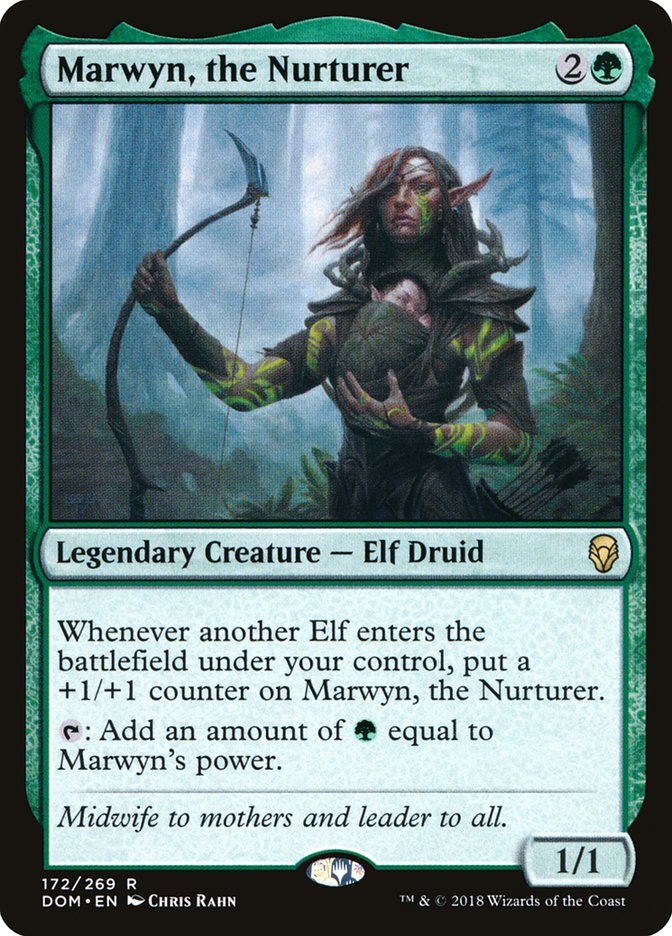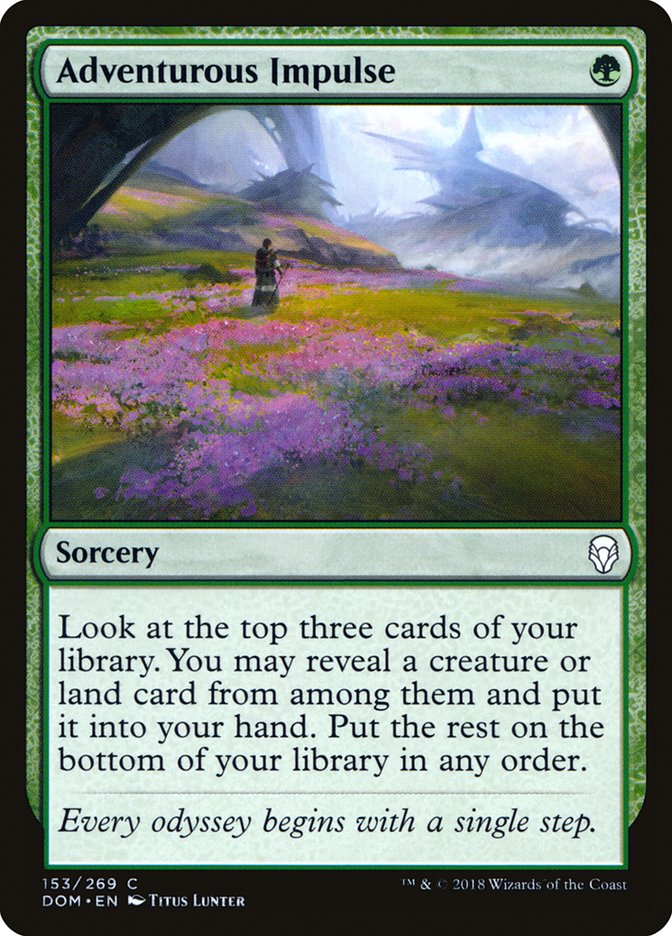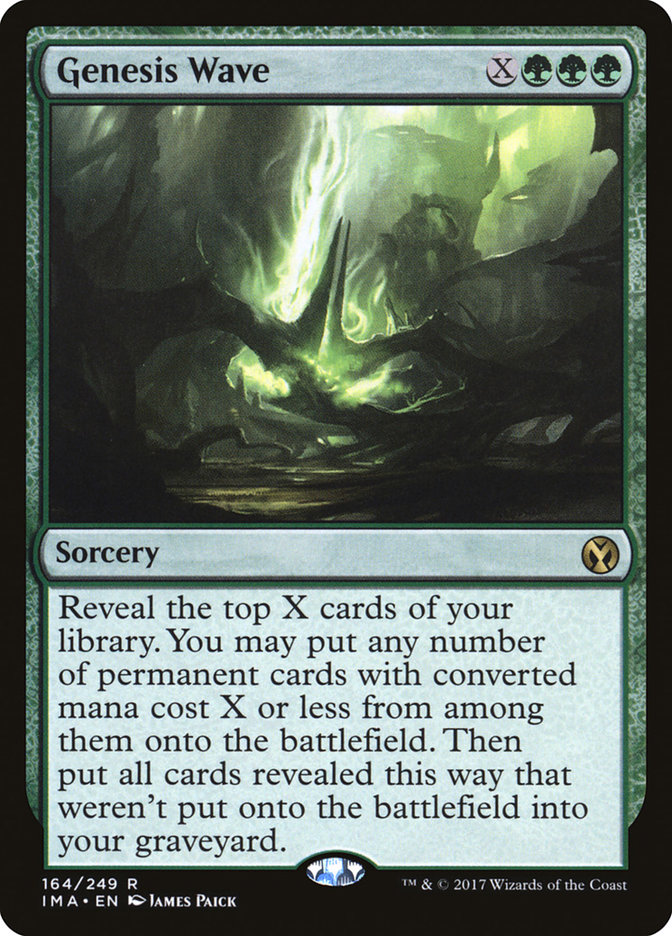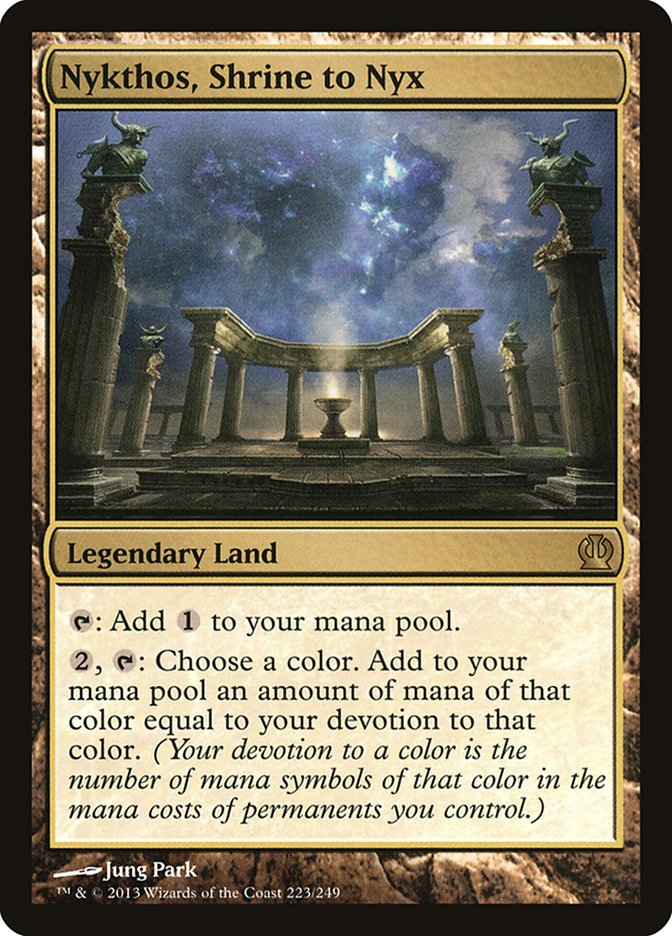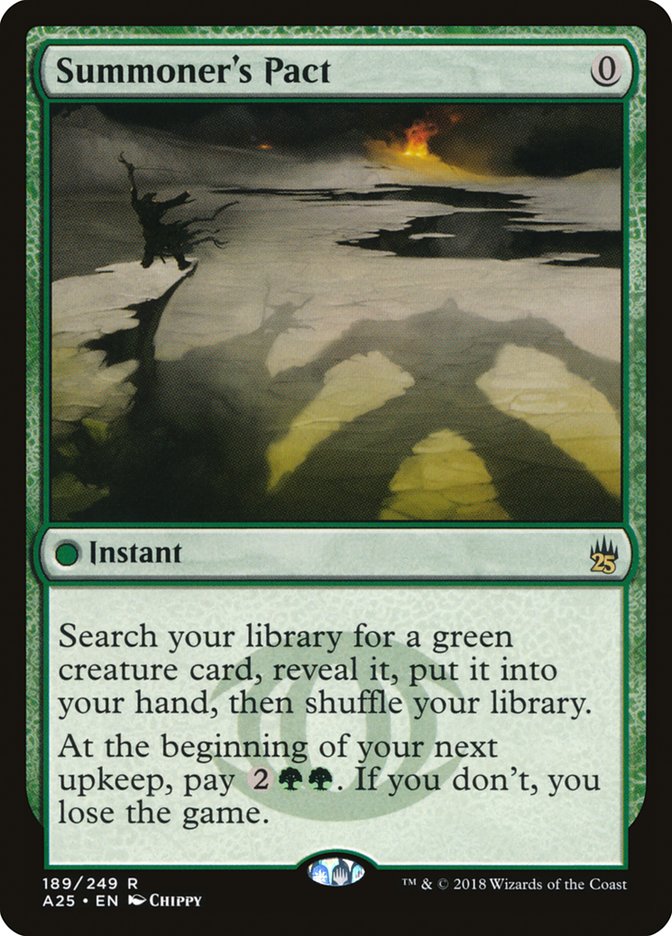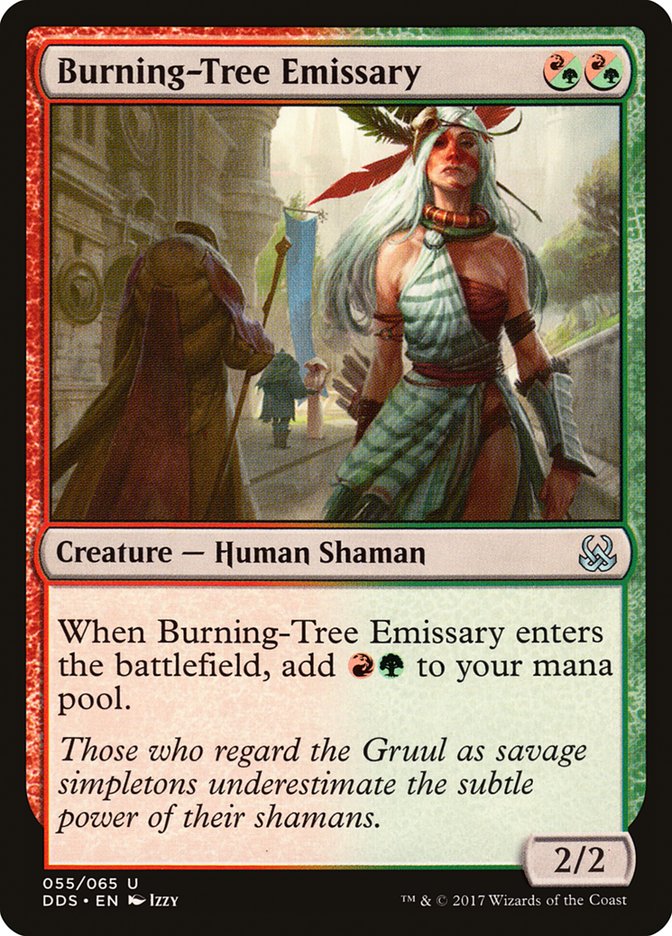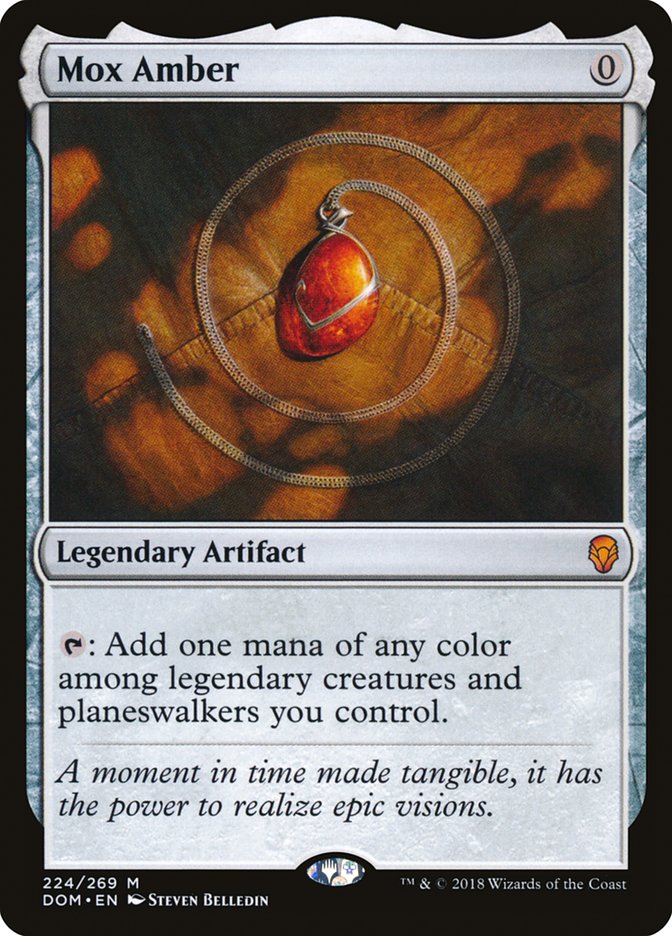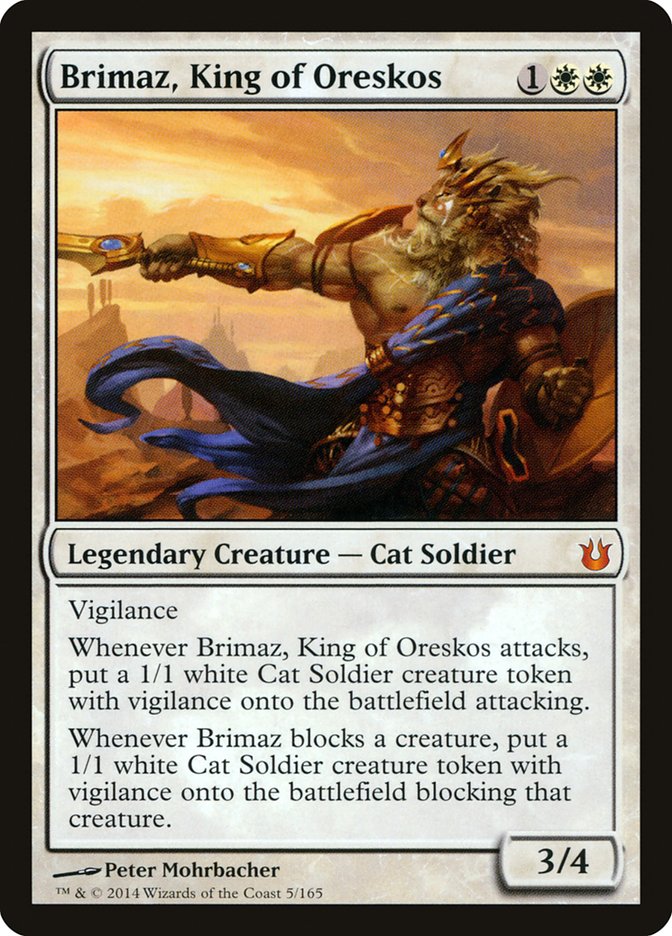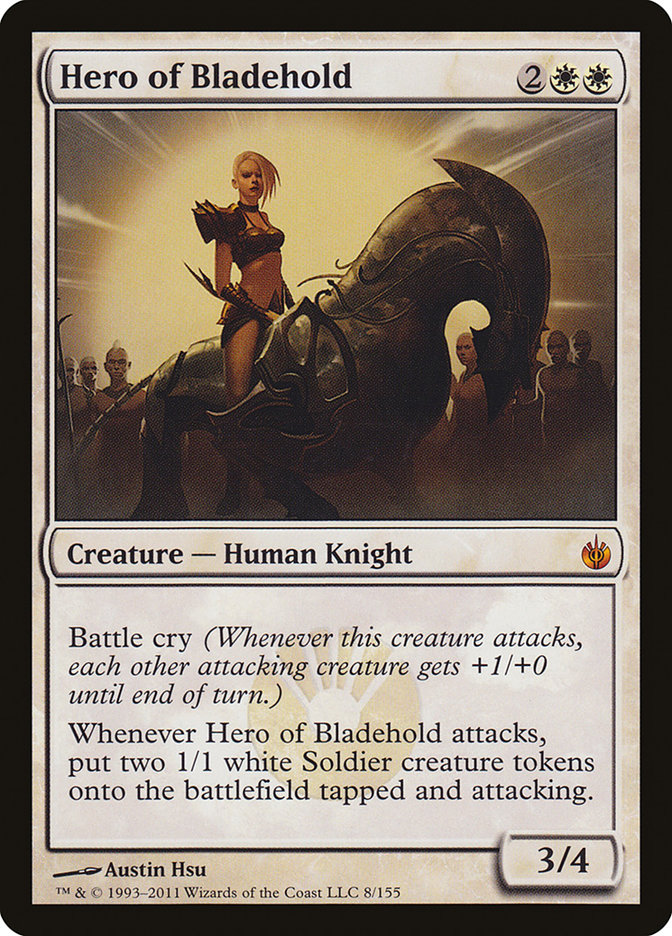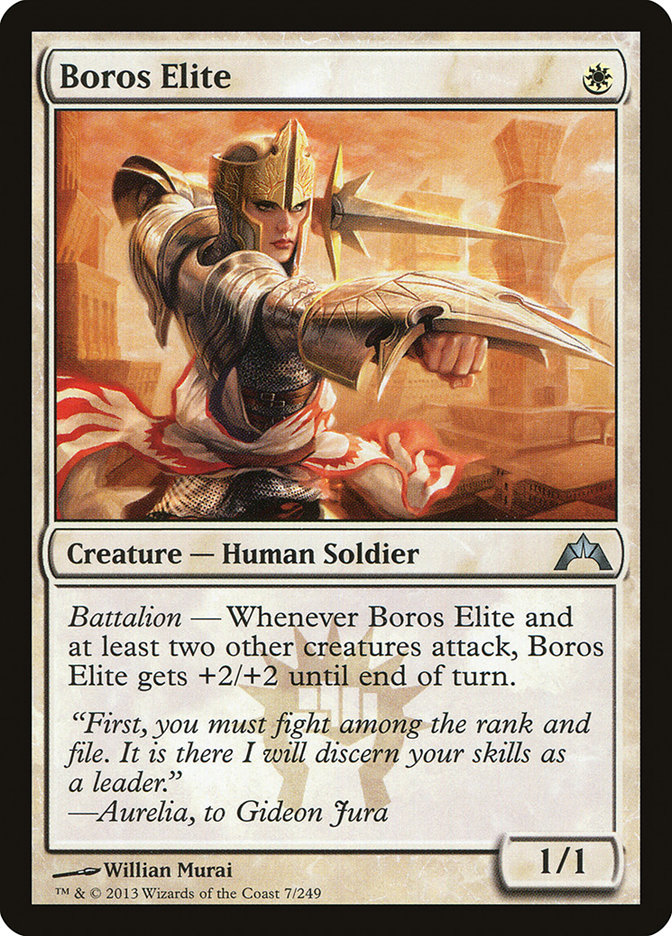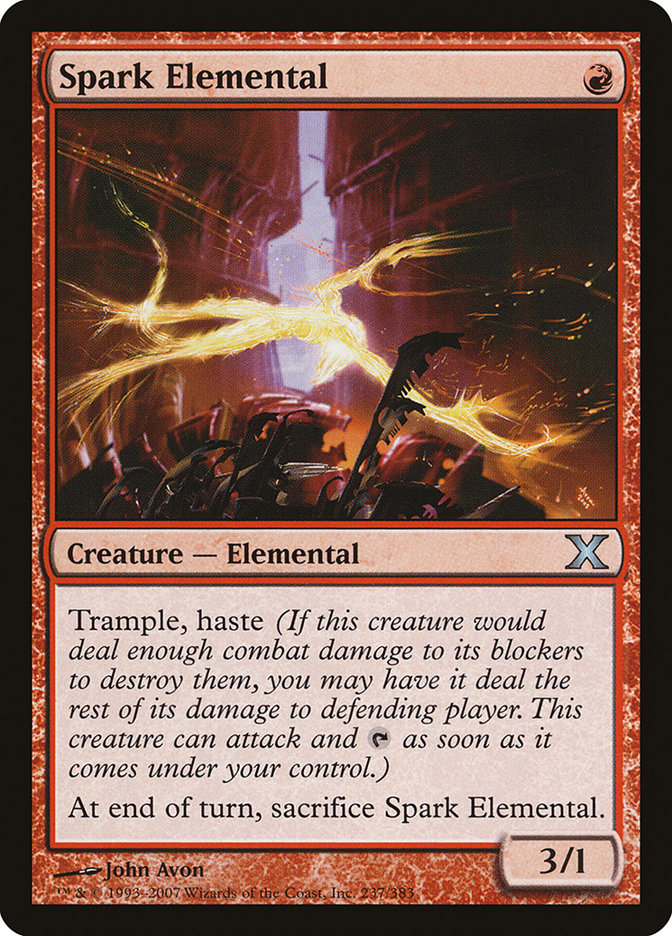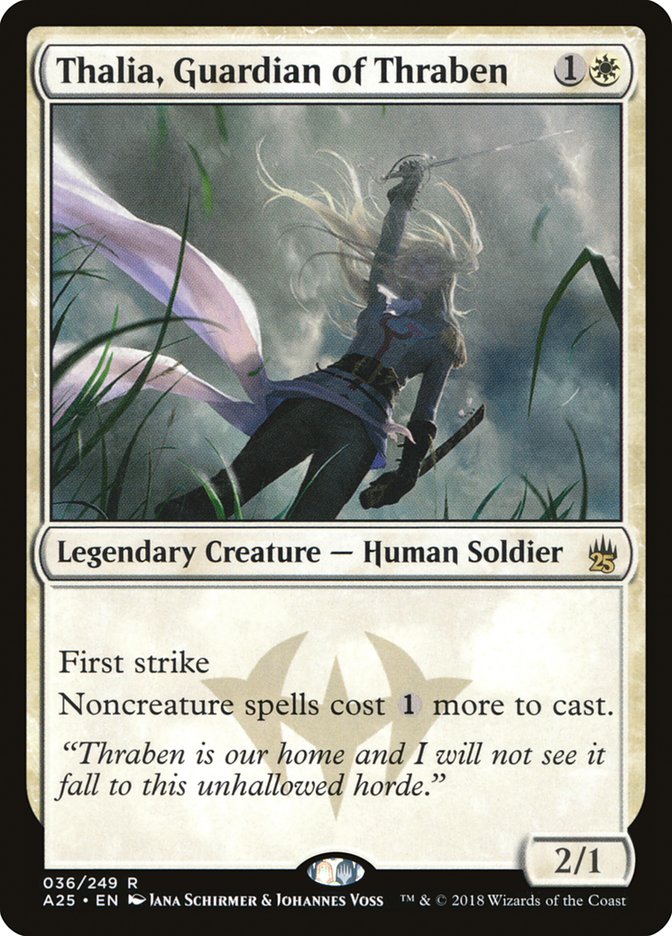Normally, my focus when looking at a new set is on its impact in Standard,
which I wrote about last week. Standard is obviously the format where new
sets are most important, and while we often see a handful of cards make
waves in older formats (Fatal Push and Unclaimed Territory being recent
examples) there is less to chew on when it comes to Modern and Legacy, and
the cards that do see play are often just upgrades for existing decks
rather than a new build-around because the barrier to entry in larger
formats is so high.
However, I find myself in a rather unusual position where nearly every
tournament I’m going to over the next few months will be Modern. Magic’s
most popular format is now the dominant format on the SCG Tour, which I’m
refocused on for this year, and I’m in the Modern seat for team events. I
won’t be playing Standard until June at the Season One Invitational and
Grand Prix Pittsburgh, at which point Dominaria will be well-explored and
I’ll have a strong base from which to start exploring the format.
As a result, I’ve taken a closer look at the previewed cards with a focus
on their potential impact in Modern. As I expected, there isn’t a large
number of potential hits, but those that are there look to slot nicely into
decks I enjoy, which is a bonus. First and foremost, that means Elves.
Llanowar Elf is the exciting card for Standard, but in Modern I’m looking
at Marwyn, the Nurturer.
Elf decks in Modern are built in large part around the power of Elvish
Archdruid, which is the natural comparison for Marwyn. I think Elvish
Archdruid is the better of the pair, since the anthem effect is important
when getting aggressive and its mana production isn’t dependent on landing
it before you start casting other Elves, making it a much better topdeck.
That said, the fact that Marwyn gives you the ability to create a large
body that can survive a sweeper like Anger of the Gods or potentially
contend in combat with a Tarmogoyf or Gurmag Angler is not to be dismissed.
Elves is certainly a go-wide sort of aggressive deck, but having the
ability to go wide and tall at the same time with a card that plays well
with your strategy is a significant addition. Thus, the difference in power
between the two isn’t that large and just because Marwyn is a little worse
than Elvish Archdruid doesn’t mean it doesn’t have a place in the deck.
You can play both cards.
So now we have two questions to answer. First, what is the total number of
these cards that we want in our deck? And second, what is the ideal split
between the two given our answer to the first question?
Oddly enough, I think the second question is easier to answer, even though
it ostensibly depends on answering the first. The reason is that Marwyn,
the Nurturer is a legend, which greatly increases its diminishing returns.
On the other side, Elvish Archdruid is great in multiples due to its anthem
effects stacking. Given that and the fact that Archdruid is better in a
vacuum, I’m going to play all four copies of it before the first copy of
Marwyn.
Now, back to the first question. The answer here I think depends on what
variant of Elves you’re playing. In my mind, there are three playable
variants: G/W with the Devoted Druid combo, G/B with Shaman of the Pack,
and Jund, which is essentially G/B that splashes for Bloodbraid Elf.
For each deck, the answer is predicated on the available space in the deck
and the desire to keep a very low curve to not disrupt the deck’s ability
to flood the battlefield quickly with Elves. I often see players raise
their curve too much in decks like this, mostly as a response to a string
of games where they topdeck weak cards in the late game and want more power
in those scenarios, without internalizing the sacrifices they make in doing
so. Therefore, I’m going to be wary of adding more three-drops, and not go
above ten or eleven total.
For G/W, the Devoted Druid combo takes up a lot of space that the other
Elves variants must maneuver with, and I’m not willing to cut into it since
that combo is what makes G/W so powerful and in my opinion the best of the
three. Even Chord of Calling, a card that I trim or cut entirely in every
matchup is untouchable in the maindeck.
As a result, I don’t see space for more than one copy of Marwyn, the
Nurturer, over an Elvish Visionary or tutor target like Eternal Witness or
Selfless Spirit. I’m inclined to say the power of Marwyn is enough to play
the one copy, but not anymore. You may want to trim an Ezuri, Renegade
Leader since as a legend it also has diminishing returns, but I consider
Ezuri as part of the combo. It also plays better in the G/W variant than
the other two because of the presence of Devoted Druid giving you more mana
to sink into Ezuri’s overrun and Druid being a weak attacker means you’re
more reliant on going over the top with Ezuri even when turning to the
aggro plan.
Without the Devoted Druid combo, you might think that G/B lists have more
space for Marwyns, but they run into another issue, namely the bottleneck
at three mana in the curve. With four copies of Shaman of the Pack
alongside Elvish Archdruid and Ezuri, Renegade Leader, we’re quickly
running into the eleven three-drop limit I’ve imposed. Ezuri is much less
important in the non-combo versions of Elves, so I’m willing to go down to
two copies, making room for one copy of Marwyn, the Nurturer.
Also, Chord of Calling is much worse in non-combo Elves variants, and while
I often see the card in lists anyway, I prefer Lead the Stampede, a card
that has diminishing returns because each extra copy makes the others less
potent by reducing the expected value of the others, and by simply being
cards that don’t affect the battlefield in a deck that is contingent on
building a large battlefield as quickly as possible. I’m willing to play
three copies of Lead the Stampede, which opens another slot that could go
to a three-drop, so two Marwyns is the maximum number I’d advise for G/B.
Jund plays similarly to G/B, but the addition of Bloodbraid Elf further
limits the space for three drops, even if they are good hits off a cascade
trigger. With four copies each of Bloodbraid Elf, Shaman of the Pack, and
Elvish Archdruid alongside the desire for two copies of Ezuri, Renegade
Leader and at least one Lead the Stampede to compound the card advantage
from Bloodbraid Elf, I don’t see any room for Marwyn, the Nurturer in Jund
lists.
To summarize, one copy in G/W, two in G/B, and zero in Jund.
The second card that struck my fancy is Adventurous Impulse. Cheap card
manipulation has a history of being very good, and especially good in older
formats that can readily take advantage of cheap spells to set up powerful
synergies. In Modern you also need to find early action or fall too far
behind, so there’s a premium placed on cards that increase your consistency
in the early game.
The most obvious home for Adventurous Impulse is Counters Company, but I
have a not so open secret about that archetype:
It’s bad. Unplayably bad. The Abzan Company decks it takes after were much
better at playing an aggressive game if the combo didn’t come together or
if your opponent played defensively so as to not lose to it, but adding a
bunch of two mana 2/1s and 0/2s to the deck made that aggro plan untenable.
G/W Elves is a far more powerful and much cleaner shell for the Devoted
Druid combo and that deck isn’t interested in a cantrip.
The deck that I do want to try Adventurous Impulse in is one of my low-key
favorites in the format, and I sincerely think it’s knocking on the door of
playability, so I’m hoping this moves the needle for…drumroll please…
Creatures (20)
- 3 Birds of Paradise
- 3 Eternal Witness
- 4 Wistful Selkie
- 4 Arbor Elf
- 1 Primeval Titan
- 1 Craterhoof Behemoth
- 4 Burning-Tree Emissary
Planeswalkers (4)
Lands (20)
Spells (16)

I can’t get over the idea of turning my deck over and putting it all on the
table at once. Lots of Green Devotion decks look to play a more
value-centric game with planeswalkers and Primal Command–Eternal Witness
loops, but I’m here to go big and nothing goes bigger than Genesis Wave.
The problem with going as big as possible is the increased dependency on
finding Nykthos, Shrine to Nyx. Oath of Nissa certainly helps in that
regard, but I think redundancy with Adventurous Impulse is a welcome
addition, especially because it can find extra copies of Burning-Tree
Emissary to set up a big turn or gain value by finding Eternal Witness and
Wistful Selkie.
My list is built to go as big as possible as quickly as possible, which is
why I like Summoner’s Pact, which often finds Burning-Tree Emissary but can
also find the singleton Primeval Titan if you’re unable to get all the way
to Genesis Wave or simply find the Craterhoof Behemoth and shortcut the win
once you have a couple creatures.
I’ve considered Hidden Herbalist as redundant copies of Burning-Tree
Emissary, but the revolt clause is a real issue here. You can’t play too
many fetchlands because you want Genesis Wave to hit actual lands to keep
the turn going and Summoner’s Pact fills the same role while being more
versatile, and I’m not even playing the full four copies of that.
This deck can win as early as turn 3, and consistently kills by turn 4 or 5
against the goldfish. The presence of planeswalkers and value creatures
means it has some resilience against disruptive decks, but its achilles
heel has been fast combo, which is quite prevalent in Modern. But the
recent metagame is much fairer and somewhat slower than Modern has
historically been, so I’m excited about the prospects of this deck making
its way to the lower tiers of the metagame.
You may have noticed a theme to the first two cards I wrote about,
something other than their both being green. They both facilitate fast
mana, one via mana creatures and the other via Nykthos, Shrine to Nyx.
Cheating on mana is always a recipe for success, whether it’s via Llanowar
Elves, Aether Vial, or cascade. But with the nostalgia of Dominaria comes a
return to the original fast mana:
Mox Amber is among the marquee cards in the set, and for good reason. The
first “fixed” moxen, Lotus Petal and Mox Diamond, are Legacy staples. The
second, Chrome Mox, is banned in Modern. And the third, Mox Opal, is often
talked about as the most egregious unbanned card in Modern. Mox Amber is
almost certainly the weakest of the group because it’s the most difficult
to utilize in the early turns of the game, which is where free mana is at
its most dangerous.
In a recent article, Brennan DeCandio goes as far as to claim Mox Amber
will not be able to function in that fashion, instead serving as a free
piece of ramp on turns 3 or 4 for decks that can incorporate some two and
three mana legends that are more powerful individual cards.
I’m more optimistic than my BCW teammate. Playing multiple one-drops on
turn 1 may not seem all that powerful, but when that curve is built around
properly, it is very powerful. I don’t want to wait to use a free land; I
want my mana now. If you want to see the potential of Mox Amber pushed to
its limit, you can scroll down a little, but I’m going to start with a more
sensible list, slotting the card into a proven Modern shell.
A quick gatherer search revealed that most of the cheap legendary creatures
were white. Thalia, Guardian of Thraben is the best of the bunch and white
has two playable legends at one mana: Kytheon, Hero of Akros and Isamaru,
Hound of Konda. Kytheon has seen play in Modern Humans as a singleton, and
I’ve been rather impressed with it in that role. It also plays well with my
plan of flooding the battlefield with Mox Amber since transforming it by
turn 3 is incredibly powerful.
Former all-star, Isamaru, Hound of Konda isn’t what it once was, but it’s
still a solid rate and if it means I get to play with a Mox, I’m definitely
in. So clearly, we’re playing a white creature deck, and one that wants to
leverage an early mana advantage against its opponent. Death and Taxes is
the clear destination, though we’ll have to rework the deck to be more
aggressive. Here’s the result:
Creatures (31)
- 3 Isamaru, Hound of Konda
- 4 Flickerwisp
- 4 Leonin Arbiter
- 3 Hero of Bladehold
- 3 Blade Splicer
- 4 Thalia, Guardian of Thraben
- 2 Brimaz, King of Oreskos
- 4 Kytheon, Hero of Akros
- 2 Thraben Inspector
- 2 Thalia, Heretic Cathar
Lands (21)
Spells (8)

The major change here is the removal of Aether Vial. Mox Amber is a more
potent source of mana acceleration, and while my initial list contained
Vial as well, it was ultimately a casualty of space. An aggressive deck
with Mox Amber is going to want plenty of one mana creatures to maximize
your early turns, and that meant making space for Aether Vial required
trimming too much of the top end, robbing the deck of its power.
While a less powerful deck, this version of Taxes leverages the Leonin
Arbiter + Ghost Quarter interaction better than any deck we’ve ever seen in
Modern. Strip Mining your opponent as early as turn 2 with a couple
creatures on the battlefield is a great play, and you’ll often end games
before your opponent can recover, especially if you follow it up with a
Thalia, Guardian of Thraben.
Thalia, Heretic Cathar and Brimaz, King of Oreskos are quality three-drops
that ensure Mox Amber can continue making mana even if the early creatures
die. They’re also both much better when cast on turn 2 via the Mox, with
Thalia punishing early fetchlands and Brimaz building a battlefield of Cat
tokens and providing a threat that survives the most popular sweeper right
now in Anger of the Gods.
The other major change is at the four-drop slot on the curve, where I’ve
replaced Restoration Angel with Hero of Bladehold. Hero is simply a game
ending threat if not answered immediately so when you cast it ahead of
schedule, especially with some other creatures on the battlefield, you’re
going to run your opponent over a significant portion of the time. They
aren’t going to have time to cast Serum Visions to find the removal spell
through your tax effects and with the move back to Lightning Bolt as the
premier cheap removal spell, they may just not have the right answer.
I’m not sold on Flickerwisp without Aether Vial, but I kept them in to give
the deck both a flier, and a way to remove blockers. There’s certainly the
potential to depart more radically from the traditional shell, but for now
I’m going to play the proven cards.
The more aggressive nature of this deck is also reflected in the manabase,
where I’ve gone up to two copies of Shefet Dunes and replaced the Tectonic
Edges in typical lists with a creature-land in Mutavault. Any way to sneak
in the last few points of damage is welcome, since one turn can make all
the difference, especially with an opponent trying to work their way out of
mana screw.
And now we come to the final and spiciest deck of them all. My gatherer
search revealed one more playable legend for one mana: Zurgo Bellstriker.
Another subpar rate, but adding red led to the inevitable spark of an idea.
If we want to have explosive early turns with lots of cheap creatures,
there’s no better payoff than Reckless Bushwhacker:
Creatures (34)
- 3 Isamaru, Hound of Konda
- 4 Wild Nacatl
- 4 Goblin Guide
- 3 Thalia, Guardian of Thraben
- 4 Boros Elite
- 4 Burning-Tree Emissary
- 4 Zurgo Bellstriker
- 4 Kytheon, Hero of Akros
- 4 Reckless Bushwhacker
Lands (15)
Spells (11)

Now we’re talking. The one mana creatures in Bushwhacker Zoo past Wild
Nacatl and Goblin Guide are subpar to begin with. Kird Ape, Experiment One,
and Narnam Renegade are the most common and replacing them with the legends
isn’t much of a downgrade on rate, though it does make the mana worse. It’s
possible that the splash for green isn’t worthwhile, but I decided to get
greedy after resorting to playing Spark Elemental over Wild Nacatl in a
straight Boros list, with Path to Exiles and Boros Charms taking the place
of Atarka’s Command.
Spark Elemental isn’t as embarrassing as it seems; haste creatures allow
you to turn on battalion for Boros Elite and Kytheon, Hero of Akros more
quickly, and potentially take your opponent by surprise, but it’s certainly
no Wild Nacatl and the power of Atarka’s Command in this deck cannot be
denied.
I’m also not at all unhappy with the necessary “downgrade” of Tarmogoyf to
Thalia, Guardian of Thraben to increase the legend count. Tarmogoyf is
notoriously weak in Zoo because they don’t fill their graveyard as reliably
as disruptive decks, and the tax on opposing removal spells is very
important in a deck looking to end games as quickly as possible.
Sweepers are obviously an issue here, though Kytheon transforming and using
Zurgo’s Dash appropriately can mitigate the effects of them and Boros Charm
is an excellent sideboard option against them, since it’s never a dead card
if the timing fails to align properly.
Boros Elite sticks out here but I think it’s important to have another
white one drop to go along with Mox Amber after a Kytheon or Isamaru and in
a deck like this Boros Elite is going to be as good as Wild Nacatl much of
the time. It’s the right role player here.
I expressed a lack of excitement over Dominaria last week, but after
looking at what the set can do in Modern I’m hopping on the hype train. Few
things feel better than casting a mox on turn 1 and doing the most broken
things possible with it. It’s time to get degenerate again.


